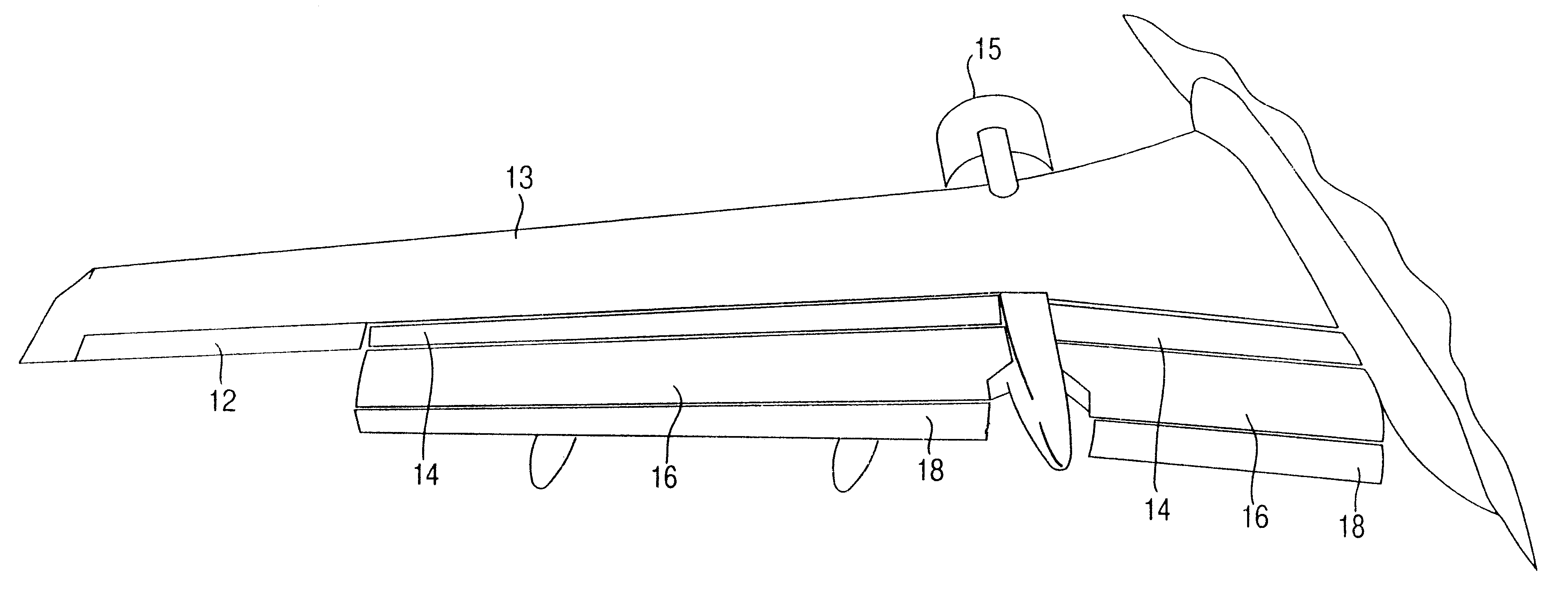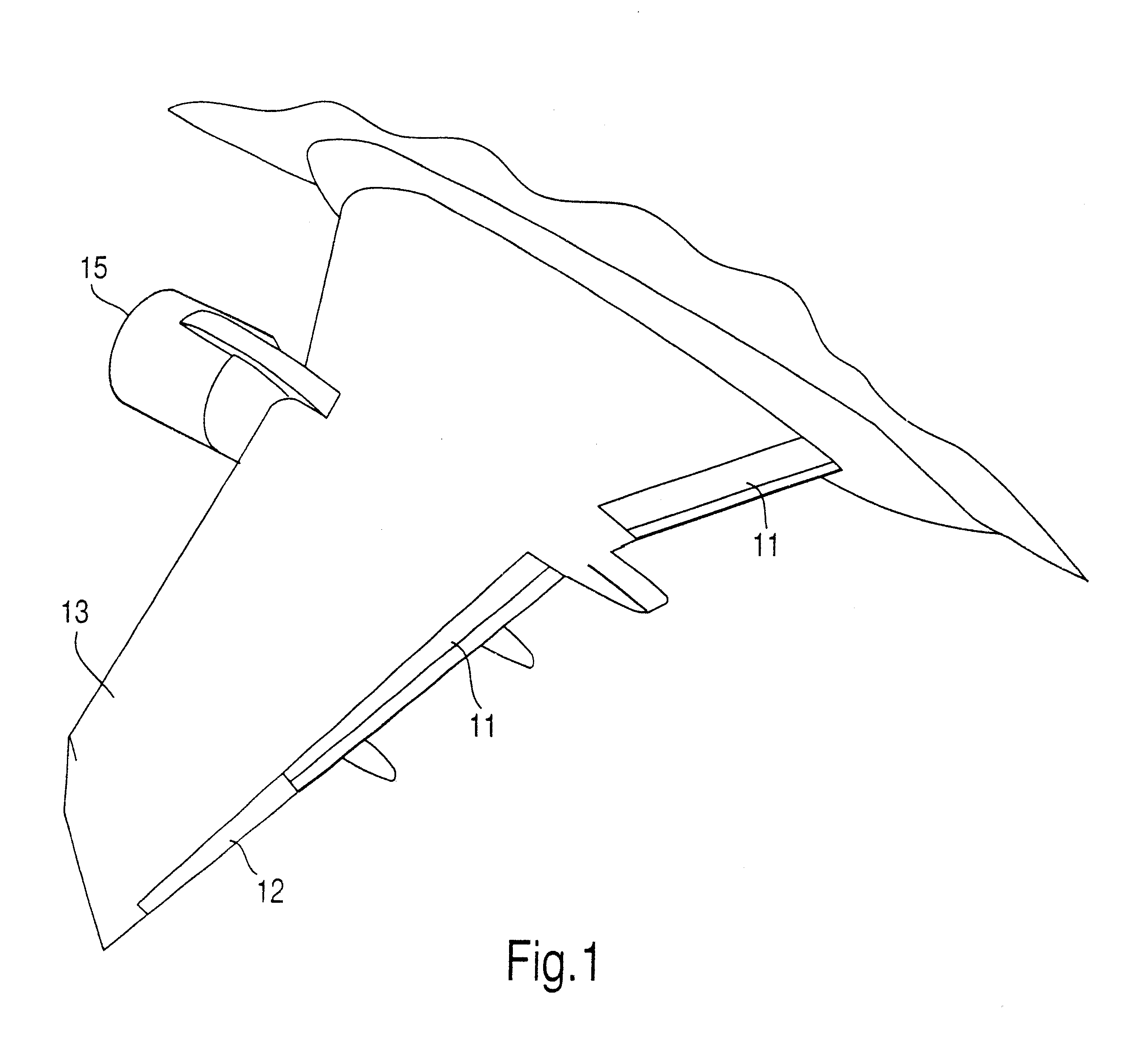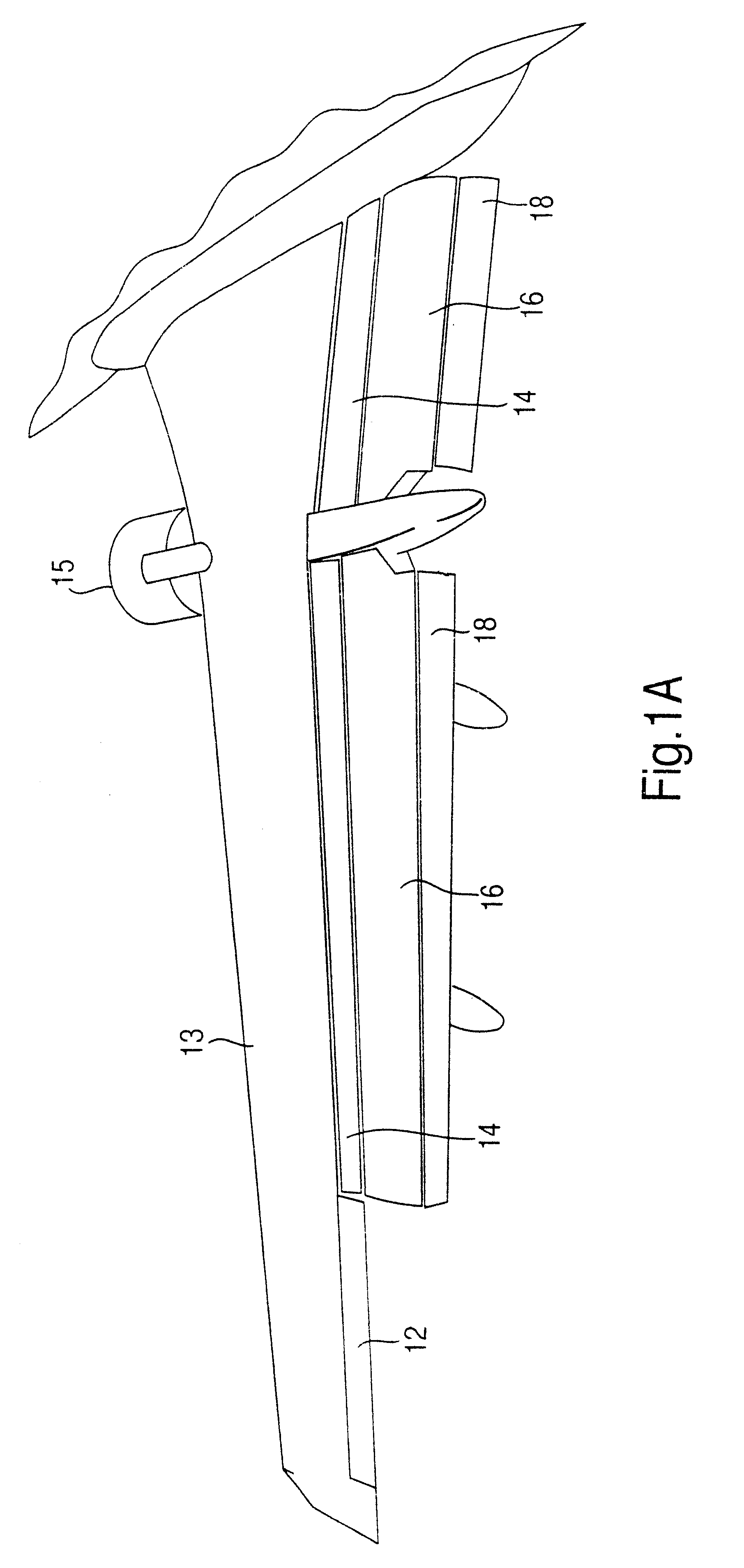Method for reducing fuel consumption in aircraft
a fuel consumption and aircraft technology, applied in sustainable transportation, climate sustainability, transportation and packaging, etc., can solve the problems of lack of practical mechanical design, reliability and functional hardware, use of these devices for aerodynamic, structural and economic considerations, and no claims regarding fuel efficiency in aircraft, so as to reduce emissions, reduce fuel consumption, and increase the effect of climbing ra
- Summary
- Abstract
- Description
- Claims
- Application Information
AI Technical Summary
Problems solved by technology
Method used
Image
Examples
Embodiment Construction
A preferred embodiment of the airfoil of the present invention employs a multi-segmented trailing edge flap system equivalent to the flap system of a Boeing 737 type aircraft. The association of the trailing edge flaps 11 and ailerons 12 to the aircraft wing 13 is depicted in FIG. 1. The trailing edge flaps 11 of the Boeing 737 aircraft are composed of a section inboard and a section outboard of the under-wing mounted powerplant 15. The inter-relationship of the trailing edge flap segments, (fore flap 14, mid flap 16, and aft flap 18), is illustrated in FIG. 2 and FIG. 2A. Each section of aft flap 18 is positioned by two push-pull rods 24, and transits on two aft flap tracks 28 installed in the mid flap 16.
The aileron neutral position 20 (FIG. 3) is altered to a predetermined position 21 situating the trailing edge of the aileron 12 below the unmodified neutral setting; utilizing standard maintenance and rigging practices for the aircraft involved.
The aft flap segments 18 are reloca...
PUM
 Login to View More
Login to View More Abstract
Description
Claims
Application Information
 Login to View More
Login to View More - R&D
- Intellectual Property
- Life Sciences
- Materials
- Tech Scout
- Unparalleled Data Quality
- Higher Quality Content
- 60% Fewer Hallucinations
Browse by: Latest US Patents, China's latest patents, Technical Efficacy Thesaurus, Application Domain, Technology Topic, Popular Technical Reports.
© 2025 PatSnap. All rights reserved.Legal|Privacy policy|Modern Slavery Act Transparency Statement|Sitemap|About US| Contact US: help@patsnap.com



